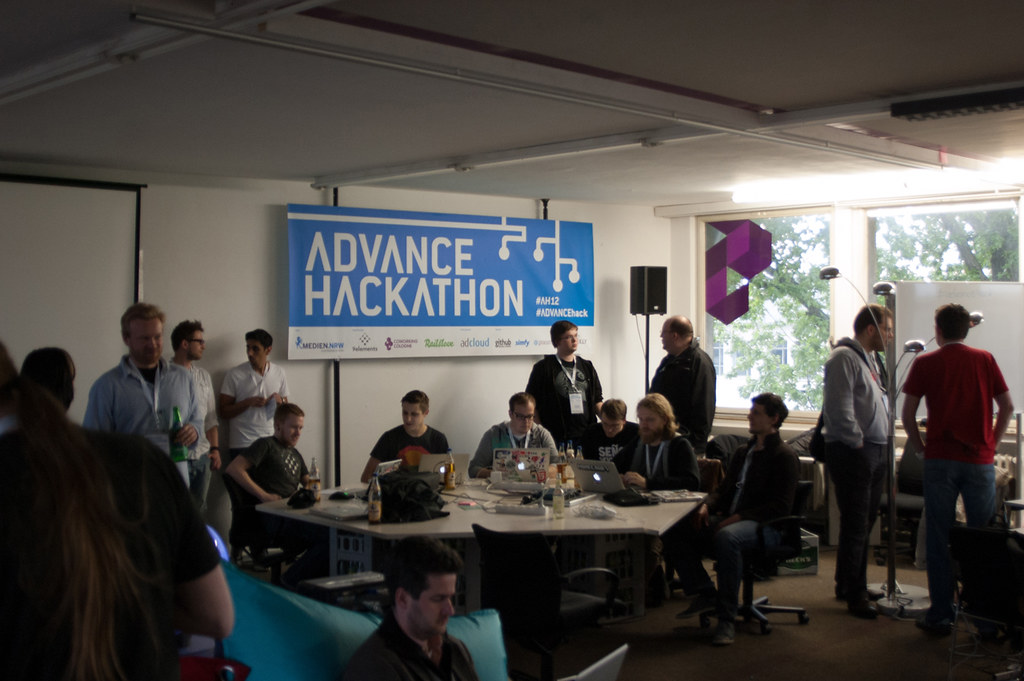When Constraints Breed Innovation: The Vanilla Web Hackathon Proves Less is More
The average webpage in 2024 weighs 2.5 MB—a 156% increase from seven years ago—with 558 KB of JavaScript alone, 44% unused during page load. Against this backdrop, the Vanilla Web Hackathon 2025 challenged developers to prove that constraint-driven development could outperform the framework-laden status quo. The results validated what performance-focused developers have known for years: severe constraints don’t limit innovation—they catalyze it.
The Anatomy of Extreme Constraints
The hackathon forced participants into a creative crucible: choose any three constraints from fifteen tracks, then build one unified project satisfying all simultaneously. This wasn’t about building separate demos—it was about architectural alchemy.
The Byte Assassin track demanded functionality in exactly 1,024 bytes total. To put this in perspective, the median webpage loads 558 KB of JavaScript—545 times larger than the entire Byte Assassin budget. Every character becomes strategic.
The CSS Alchemist track permitted CSS-only interactivity—no JavaScript for functional behavior.
Modern CSS offers: checked pseudo-selectors for state management, : target for modal navigation, : has() for conditional styling—an entire interaction vocabulary without touching the JavaScript engine.
The Single-Request Samurai track required everything in one HTML file. This eliminates network waterfalls, guarantees offline functionality, and ensures version atomicity—paralleling mobile app architecture where an APK is a single atomic unit.
What Winners Revealed About Optimization
Cyber Guardian ($1,000) demonstrated that security doesn’t require heavyweight libraries. By leveraging browser-native Web Crypto API—crypto.subtle.digest() for hashing, crypto.subtle.encrypt() for authenticated encryption—the project achieved meaningful security features within extreme size constraints. This mirrors mobile development’s principle: platform capabilities often exceed framework abstractions.
ASCII Dungeon Adventure ($300) achieved perhaps the hackathon’s most technically audacious feat: a fully playable dungeon crawler using only CSS. The core innovation treated CSS as a state machine using checked pseudo-selectors on hidden inputs. Each checkbox represents a game state—player position, inventory items, and enemy states. Checking inputs through CSS-only interactions triggers cascading style changes that render different game states.
css
#player-position-2:checked ~ #dungeon-map .room-2 .player {
display: block;
}
#has-key:checked ~ #dungeon-map .locked-door {
opacity: 0.3;
pointer-events: none;
}
The performance implications are profound: zero JavaScript blocking time, minimal memory usage, and perfect Interaction to Next Paint scores. The median mobile webpage causes 1,209ms of total blocking time at the 50th percentile, rising to nearly 6 seconds at the 90th percentile. A CSS-only game has none of this overhead.
TheTerminusProject ($200) earned recognition for “rising star potential”—strong constraint handling and clean execution. Terminal UIs offer architectural advantages: no images required, minimal CSS, complex layouts using system-native monospace fonts. This aesthetic constraint becomes an optimization multiplier.
Mobile Architecture Principles Informing Constraint Evaluation
The judging panel included experts from TD Bank, Meta, Google, and Okta—bringing deep experience in scalable architecture and mobile development. Dmytro Boichuk from TD Bank, with 13+ years building Android applications across healthcare and fintech, evaluated how mobile constraint thinking translates to web performance challenges.
Mobile developers operate under hard limits: Google Play’s 200 MB download limit, device RAM ranging from 512 MB on budget phones to 12+ GB on flagships, and battery optimization requirements. These constraints breed patterns that translate directly to constrained web development:
Memory management: Android developers use SparseArray instead of HashMap for integer-keyed collections, avoiding autoboxing overhead. Web equivalent: use Map with primitive keys instead of objects.
Code optimization: Android’s R8 code shrinker achieves 9.3% size reduction through aggressive dead code elimination. This mindset applies to web: tree-shaking, minification, and compression aren’t optional—they’re essential hygiene.
Architecture patterns: Mobile MVVM enforces clear separation between UI and business logic. The web equivalent isn’t a specific framework—it’s the principle of separating state management from rendering and implementing unidirectional data flow.
When judging technically sophisticated hackathon solutions, one evaluator articulated the mobile-to-web translation: “What impressed me most about the winning solutions was their approach to system architecture… exceptional technical foresight by implementing a hybrid processing model that balances local and cloud computing resources. This approach ensures both privacy and performance—critical factors for accessibility tools that must function reliably across varying internet conditions.”
This emphasis on dynamic response handling based on network latency reflects evaluation criteria applied to any system: Does it work reliably at scale under real-world constraints? Elegant solutions under ideal conditions matter far less than robust solutions that degrade gracefully.
Technical Techniques Worth Adopting
CSS-only interactivity patterns represent underutilized platform capabilities. The: checked pseudo-selector enables state management for accordions, tabs, and toggles. The: target pseudo-selector enables modal dialogs. The modern::has () pseudo-class (92% browser support) enables parent selection for form validation without JavaScript.
Critical rendering path optimization: The recommended critical CSS budget is 3-9 KB inlined in <head>—enough to render above-the-fold content without external requests. The 14KB TCP slow-start congestion window means initial HTML plus inlined CSS can render in one round trip.
Performance budgeting as architecture: Mobile developers set budgets from day one: app size <50MB, startup time <2 seconds. The hackathon’s constraints are performance budgets: Byte Assassin <1KB, 2G Connection Ninja must load on 400ms latency. These become architectural requirements, not post-development optimization targets.
Lessons for Production Development
The hackathon’s value extends beyond competition—it teaches architectural thinking applicable to production:
Start with performance budgets, not frameworks: Before choosing React or Vue, define performance requirements. If your budget allows a 200KB initial bundle and React alone is 45KB minified + gzipped, you have 155KB for application code. The constraint guides technology choices.
Embrace platform capabilities: Web Crypto API, IntersectionObserver, CSS Grid, native lazy loading—modern browsers offer extensive APIs that eliminate library dependencies.
Design for the constraint: ASCII Dungeon Adventure didn’t fight CSS-only constraints—it designed where CSS-only interactions felt natural. Mobile developers do this constantly: design battery-conscious features, design for intermittent connectivity, design for limited memory.
Measure continuously: Lighthouse CI in GitHub Actions costs zero and prevents regressions. Mobile developers use Firebase Performance Monitoring or App Center for release-over-release metrics.
Constraints as Catalysts
The 2024 web performance data reveals a crisis: only 59% of mobile pages have good Largest Contentful Paint, and Total Blocking Time at the 90th percentile reaches 5,950ms—nearly 6 seconds, where the main thread is completely blocked. Projects optimizing for hackathon constraints inherently achieve excellent Core Web Vitals because they eliminate the bloat that causes these problems.
Mobile development evolved through constraints. Early Android devices had 256MB RAM and 400MHz CPUs. Developers optimized ruthlessly because users uninstalled poorly performing apps. Modern devices have 12GB RAM and 8-core CPUs, but developers still optimize because constraints breed better architecture.
Web development evolved oppositely. Broadband and powerful devices arrived, and developers stopped optimizing. Today’s 2.5MB average page weight isn’t a technical necessity—it’s cultural complacency.
The hackathon’s 72-hour battle against bloat demonstrates that constraint-driven development produces better outcomes: faster load times, lower resource usage, clearer architecture, and more accessible experiences. When constraints force you to eliminate the unnecessary, what remains is what truly matters: clean code, fast performance, and experiences that respect users’ time, devices, and bandwidth.

















